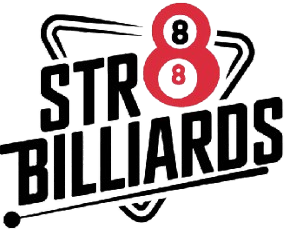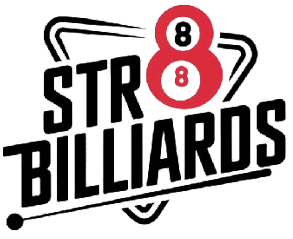If your pool table is not level, it can result in frustrating gameplay, expensive repairs, and long-term damage. Understanding the hidden costs associated with an uneven table can help you take action before minor issues escalate into major problems. In this blog, we will explain how uneven tables affect gameplay, the risks associated with pool leveling, the signs that indicate your table needs re-leveling, tips for maintaining your table in good condition, and the professional leveling process.

How an Uneven Pool Table Affects Gameplay
An uneven pool game table can make even the best players struggle to manage consistency. Some impacts on the gameplay are mentioned as follows:
- Balls roll off course – if your gaming table is uneven, the balls would not roll true. They might drift unexpectedly, making it almost impossible to predict shots perfectly.
- Inconsistent Bounce – Pool tables are curated with proper angles for rebounds. An uneven surface alters how balls react and making the bank shots unreliable.
- Frustration for prayers – in case you are playing competitively or casually, an unlevel table takes the skill out of the game, leading to the unfair advantage or unnecessary frustration.
If you have ever taken a perfect shot only to see the ball roll strangely, be sure your table may need levelling.
Long-Term Damage From Pool Levelling
Apart from poor gameplay, an uneven pool table can result in structural damage over time. Some tips are mentioned as follows.
- Stress on the frame – When a table is uneven, be sure its weight is not distributed correctly. It may result in cracks or warping in the frame.
- Felt wear and tear – In case the balls roll in unnatural directions, it can cause excessive wear on particular areas of the felt, which leads to premature replacement requirements.
- Damage to the slate—The slate bed should remain level to assure durability. If left unbalanced, the slate will develop shifts or cracks, making expensive repairs inevitable.
Neglecting to level the table regularly can turn the minor issue into a costly repair or even necessitate a full table replacement.
Signs That Your Table Needs Releveling
In case you are not sure about the unevenness of your pool table, the following section records some clear signs that your table needs releveling:
- Ball rolls to one side – If you notice that balls continuously roll toward a particular area without force, the table is surely unlevel.
- Uneven cushion response – When balls do not rebound as expected, it can indicate an imbalance affecting the cushions.
- Visible table leg imbalance – if one leg appears low or high in comparison to others, the table requires adjustment.
- Shifting after movement – In case you have recently moved your pool game table or placed some heavy objects nearby, releveling in needed to restore balance.
Daily checking for these signs can assist you in addressing issues before they lead to permanent damage.
The Professional Leveling Process
When there is a minor leveling alteration, it can be done at home. On the other hand, professional levelling assures precision and long-lasting outcomes.. The professional procedure usually includes:
A professional will inspect the legs of the table, playing surface and frame to identify any imbalances.
- Adjusting the leg levelers
Most modern tables appear with adjustable leg levelers that professionals fine-tune to balance the playing field.
A thin piece of material or shim may be placed under the slate to correct any unevenness for the slate tables.
- Rechecking and fine-tuning
After previous adjustments, professionals roll test balls across the surface to assure proper levelling and refinement.
Hiring the professionals assures your table is accurately level, eliminating unnecessary wear and enhancing gameplay.
Maintenance Tips for Keeping Your Pool Table Level
Once the table is properly leveled, maintaining the balance is important to avoid future issues.
The tips to keep your pool table in the best condition:

- Place your table on a stable surface
Avoid placing the pool table on uneven flooring or carpet. A solid, stable floor assists in maintaining long-term balance.
- Avoid leaning on the table
Excess pressure from sitting, placing or leaning on heavy objects beside the table can transfer its balance over time.
- Check the level periodically
Utilise the spirit level every few months to identify for any further imbalances and minor issues before they worsen.
- Schedule professional maintenance
Even with proper maintenance, professional inspection as well as adjustments frequently assure long-term performance and durability.
FAQs About Pool Table Leveling
- How often should I level my pool table?
Check the level of your table every few months if you play frequently. After moving the table or at least once every few years, professional leveling should be performed.
- Can I level my pool table myself?
Leg levelers and a spirit level can be used to make small modifications, but professional assistance is advised for accurate leveling.
- What happens if I don’t level my table?
An uneven table results in poor gameplay, excessive felt wear, frame stress, and possible slate damage, necessitating expensive repairs.
- How much does professional pool table leveling cost?
The price usually ranges from $100 to $300, though it varies based on the type of table and the degree of imbalance. By hiring a professional leveler, you can avoid future, more costly repairs.


